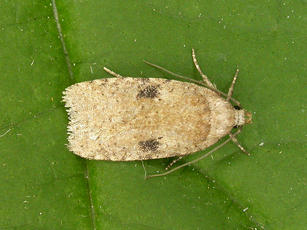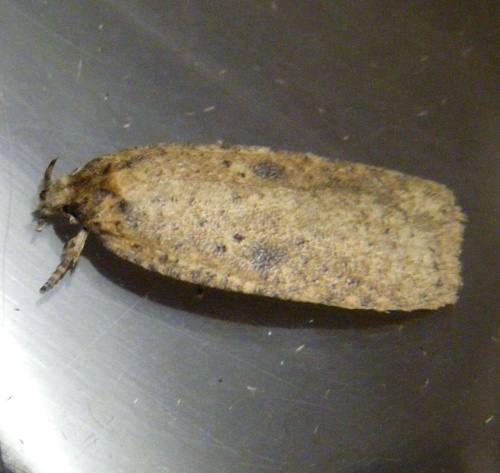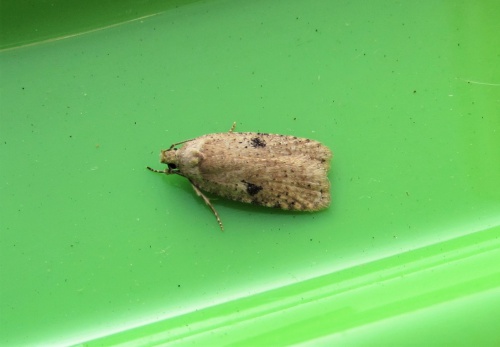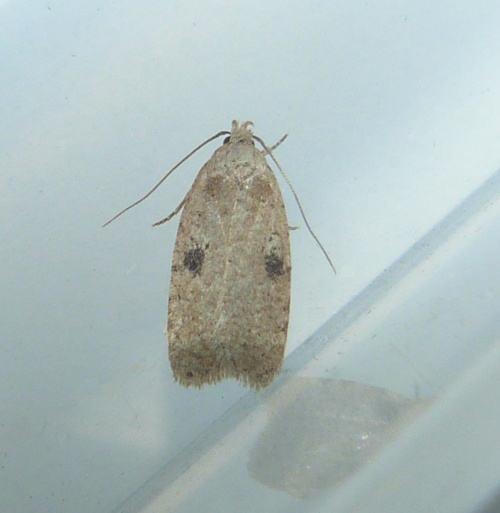Agonopterix propinquella
Black-spot Flat-body
Wingspan 16 to19mm.
Areas where the larval foodplants are found.
The adults emerge in a single generation in September, and hibernate through the winter, re-emerging in spring. The moth often comes to light.
The eggs of this species are laid on a leaf of Creeping Thistle or Spear Thistle with the larvae mining the underside if the leaf, until a late instar where it feeds in a web under the midrib of the leaf, causing visible blotching on the upperside. The larvae pupate in August, usually amongst the leaf litter, occasionally within the web.
The species is found locally in England, Wales and southern Scotland. In the Butterfly Conservation's Microlepidoptera Report 2011 this species was classified as local.
It appears to be uncommon in Leicestershire and Rutland, where there are few records. L&R Moth Group status = D (rare or rarely recorded).
Leicestershire & Rutland Map
Enter a town or village to see local records
MAP KEY:
Yellow squares = NBN records (all known data)
Coloured circles = NatureSpot records: 2020+ | 2015-2019 | pre-2015
UK Map
Species profile
- Common names
- Black-spot Flat-body
- Species group:
- Moths
- Kingdom:
- Animalia
- Order:
- Lepidoptera
- Family:
- Depressariidae
- Records on NatureSpot:
- 11
- First record:
- 23/05/2010 (Skevington, Mark)
- Last record:
- 08/05/2023 (Gamble, David)
Total records by month
% of records within its species group
10km squares with records
The latest images and records displayed below include those awaiting verification checks so we cannot guarantee that every identification is correct. Once accepted, the record displays a green tick.
In the Latest Records section, click on the header to sort A-Z, and again to sort Z-A. Use the header boxes to filter the list.





